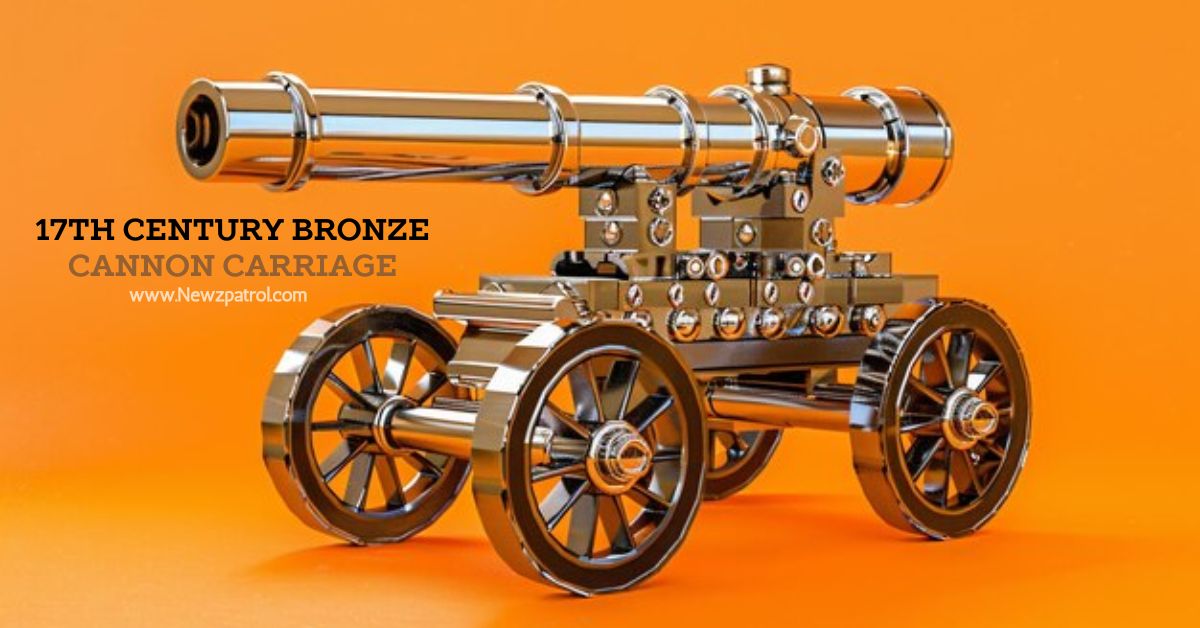The clang of metal, the thud of wood against earth—these sounds echo through history, telling tales of battles fought and won. At the heart of these stories are 17th-century bronze cannon carriage, remarkable feats of craftsmanship that served as both instruments of war and symbols of power. Imagine soldiers marching with pride alongside beautifully adorned carriages, their cannons gleaming in the sunlight. The artistry behind these creations is often overlooked but deserves a closer look. Join us on this journey as we uncover the intricate details and rich heritage woven into every curve and corner of these historical wonders. From Dutch signal cannons to British naval guns, we’ll explore how functionality met artistry in a time when precision was key to dominance on land and sea. Are you ready to dive deep into this fascinating world? Let’s begin!
Outline for “Exploring the Craftsmanship of 17th Century Bronze Cannon Carriages”
The 17th century was a time of innovation and artistry, especially in the realm of warfare. Bronze cannon carriages emerged as a remarkable blend of functionality and beauty. These creations reflected not only military might but also the craftsmanship that defined an era. Each piece told its own story, rich with historical significance.
Dutch artisans were particularly adept at creating intricately designed bronze signal cannons mounted on ornately painted wooden field carriages. Imagine these striking pieces commanding attention on the battlefield while delivering powerful messages across vast distances.
Across the English Channel, British design flourished too. Their early naval gun carriages showcased robust engineering paired with elegance—a testament to their growing maritime power. As we delve deeper into these masterpieces, we’ll uncover what made them so unique and influential in shaping artillery history.
16th-17th Century European Bronze Cannon
The 16th and 17th centuries marked a significant evolution in European warfare, with bronze cannons taking center stage. These formidable weapons were not merely tools of destruction; they embodied the artistry and engineering prowess of their time. Crafted from high-quality bronze, these cannons offered superior durability and range compared to their iron counterparts.
Artisans meticulously shaped each cannon, often embellishing them with intricate designs that reflected both military might and artistic flair. Engravings of heraldry or mythological themes adorned their surfaces, transforming functional objects into stunning pieces of art.
As nations vied for dominance on land and sea, the demand for reliable artillery surged. This period witnessed an explosion in innovation as skilled craftsmen pushed boundaries to create powerful yet elegant cannon designs that would leave a lasting legacy in military history.
Dutch Bronze Signal Cannon on Ornately Painted Wooden Field Carriage
The Dutch Bronze Signal Cannon stands as a symbol of innovation and artistry in the 17th century. Its intricate design captures the eye, showcasing not just military prowess but also an appreciation for beauty. Crafted from rich bronze, its surface gleams with history, each curve telling tales of battles fought and victories celebrated.
Paired with an ornately painted wooden field carriage, this cannon becomes more than mere artillery; it transforms into a work of art. The vivid colors and elaborate motifs on the carriage reflect the artistic trends of the time, merging functionality with aesthetic appeal. Detailed brushwork brings life to wood that could easily go unnoticed amidst the chaos of warfare.
This fusion highlights how craftsmanship transcended practical needs. The signal cannon served multiple purposes—communicating messages across great distances while captivating all who laid eyes upon it.
Model Field Cannon with Carriage
The model field cannon with its carriage serves as a fascinating glimpse into the artistry of 17th-century craftsmanship. Each piece tells a story, embodying the blend of functionality and aesthetic appeal that defined this era. The intricate designs showcase not only technical skill but also an appreciation for beauty in military engineering.
These models were often used for drills and demonstrations, yet they hold immense historical value. Artisans meticulously crafted them from bronze, ensuring durability while allowing for ornate detailing. The woodwork on the carriage complements the metal beautifully—each curve and joint reflects hours of labor.
As you explore these miniature marvels, consider their role in shaping warfare tactics during their time. They symbolize progress in artillery technology while celebrating the skillful hands that forged them into existence.
How To Paint 17th & 18th Century Bronze Cannons
Painting 17th century bronze cannon carriage is an art that honors history. Begin by cleaning the surface thoroughly, removing any dirt or old paint to reveal the beautiful metal beneath. A gentle scrub with a soft brush ensures you don’t damage the intricate details.
Next, choose your colors wisely. Historically accurate shades of green, black, or brass highlight the cannon’s features while paying homage to its past. Use high-quality acrylics for durability and authenticity; they will withstand time like the cannons themselves.
Apply multiple thin layers instead of one thick coat. This technique prevents drips and allows for even coverage. Don’t forget to seal your masterpiece with a clear varnish to protect it from elements that could dull its shine over time. Your painted cannon can then stand as a testament to craftsmanship across centuries!
British Cannon Design 1600 1800
The British cannon design from 1600 to 1800 showcased remarkable innovation and craftsmanship. During this period, artillery became crucial in naval warfare and land battles alike. The designs evolved dramatically, reflecting the needs of a growing empire.
Early cannons were often made of wrought iron or bronze, with intricate detailing that highlighted their status as both weapons and works of art. Craftsmen paid special attention to balance and mobility, ensuring these formidable machines could be maneuvered effectively on various terrains.
By the late 1700s, advancements led to more standardized production methods. This allowed for increased efficiency without compromising quality. The result was a lineup of powerful cannons capable of delivering devastating firepower while maintaining an elegance that spoke volumes about British engineering prowess during this era.
Early 17th Century British Naval Gun Carriages
The early 17th century witnessed a remarkable evolution in British naval warfare, with gun carriages playing a pivotal role. These sturdy structures were crafted from oak, designed to withstand the fierce forces of battle at sea. A skilled craftsman would meticulously shape each piece, ensuring durability and functionality.
Naval gun carriages featured innovative mechanisms for elevation and recoil absorption. This ingenuity allowed sailors to fire cannons more effectively while minimizing disruptions during tumultuous conditions. The design showcased an impressive blend of artistry and engineering.
Moreover, these carriages became symbols of power on the high seas. As ships battled for dominance over trade routes, their armaments reflected national pride and technological prowess. Each cannon represented not just weaponry but also the craftsmanship that defined an era of exploration and conflict on water’s vast expanse.
Conclusion
The allure of 17th century bronze cannon carriages lies not just in their formidable presence but also in the rich stories they tell. Each piece reflects a time when craftsmanship was held to the highest esteem, merging art with functionality.
As we delve deeper into history, these remarkable artifacts remind us of the innovation and skill possessed by artisans centuries ago. Their intricate designs reveal a dedication that transcends mere military utility.
Today, as collectors and historians cherish these treasures, we are left inspired by their beauty and complexity. The legacy of 17th century bronze cannon carriage continues to spark curiosity, inviting enthusiasts to explore further into our shared past.
Read More Articles On Our Site!











